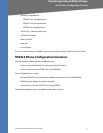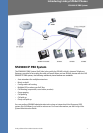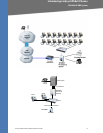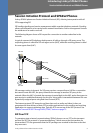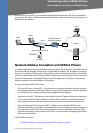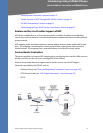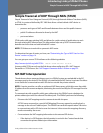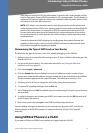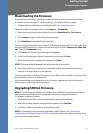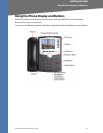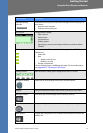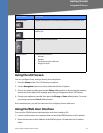
Linksys SPA9x2 Phone Administration Guide Cisco Confidential--First Draft13
Simple Traversal of UDP Through NATs (STUN)
Introducing Linksys SPA9x2 Phones
Simple Traversal of UDP Through NATs (STUN)
Simple Traversal of User Datagram Protocol (UDP) through Network Address Translators (NATs),
or STUN, is a protocol defined by RFC 3489 that allows a client behind a NAT device to
determine the:
• presence and types of NATs and firewalls between them and the public Internet
• public IP addresses allocated to them by the NAT
• port associations
STUN works with many existing NATs and allows for a wide variety of applications to work
through existing NAT infrastructure.This information helps set up UDP communication
between two hosts that are both behind NAT routers.
NOTE: STUN does not work with a symmetric NAT router.
To determine the type of router you have, see ”Determining the Type of NAT Used on Your
Router” section on page 14.
You can get open-source STUN software at the following website:
http://www.voip-info.org/wiki-STUN > “Public STUN Servers” section.
Use any public STUN server from the link above when configuring SIP > NAT Support
Parameters > STUN Server. See ”NAT Support Parameter Notes” section on page 53.
SIP-NAT Interoperation
The addresses where messages/data are sent to a SPA9x2 system are embedded in the SIP
messages sent by the device. If the SPA9x2 is located behind a NAT device, its private IP address
is not usable for communications with SIP devices outside the private network.
NOTE: A service provider can offer an outbound NAT-Aware proxy, which discovers the public
IP address from the remote endpoint, eliminating the need to modify the SIP message from the
UAC.
To communicate with a specific public peer address/port, the SPA9x2 must substitute the
private address/port with the external IP address/port. The SPA9x2 performs the following:
• Discovers the NAT mappings used to communicate with the peer.
A STUN server responds to a special NAT-Mapping-Discovery request by sending back a
message to the source IP address/port. The SPA9x2 can send this request when it first tries
to communicate with a SIP device over the Internet. It then stores the mapping discovery
results returned by the server.
• Communicates the NAT mapping information to the external SIP devices.
• If the device is a SIP Registrar, the information is carried in the Contact header that
overwrites the private address/port information.




